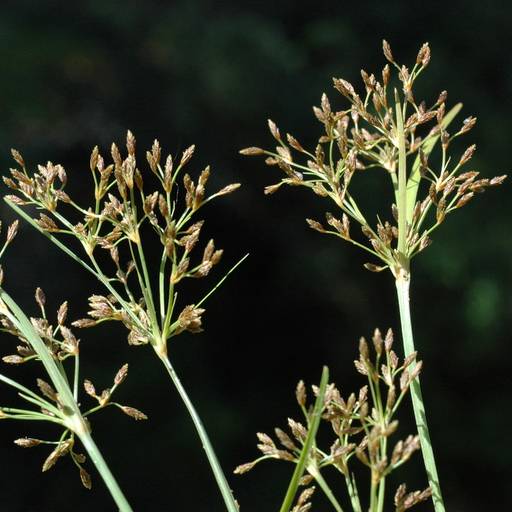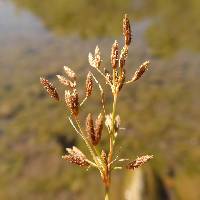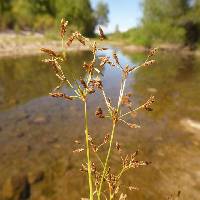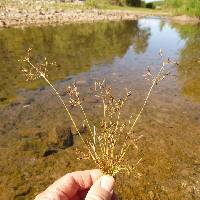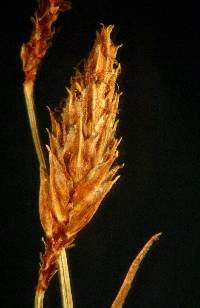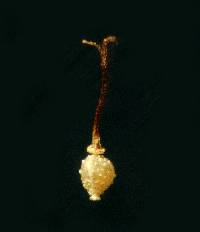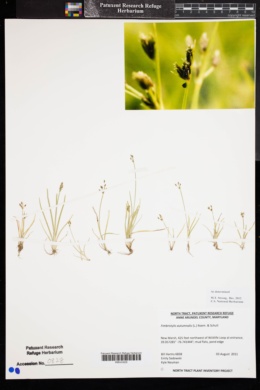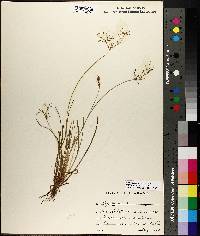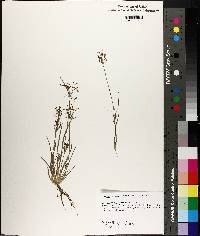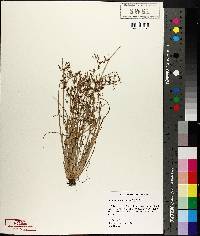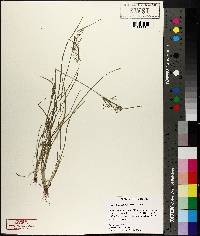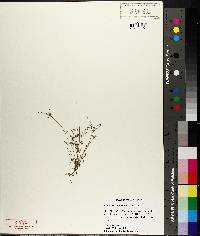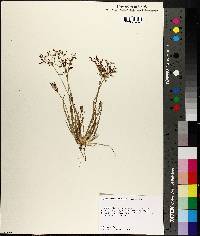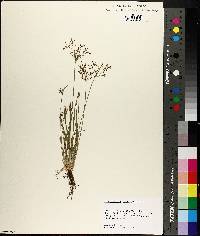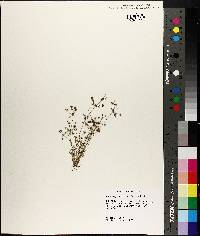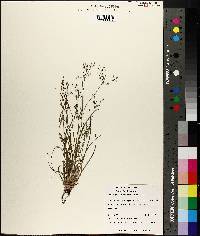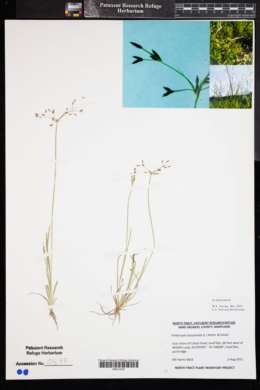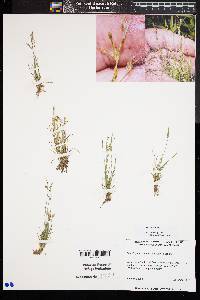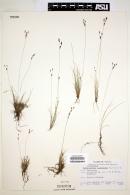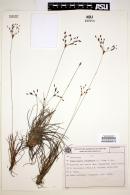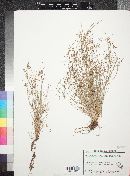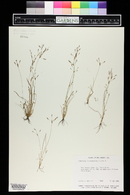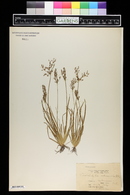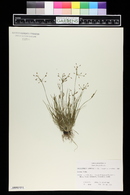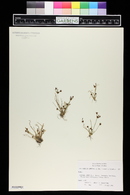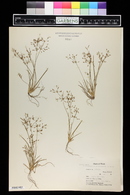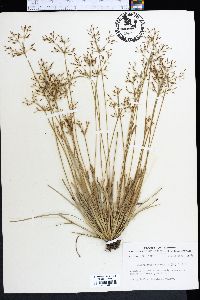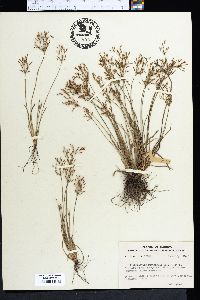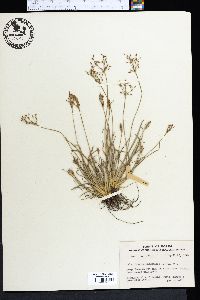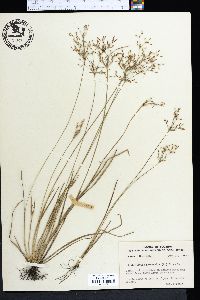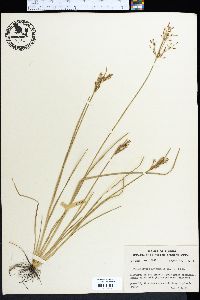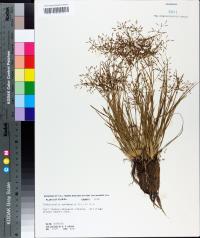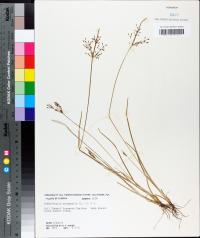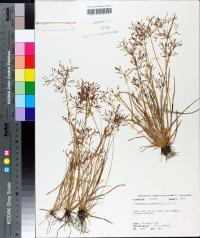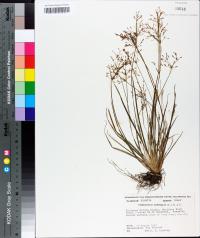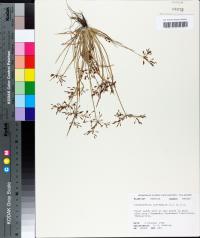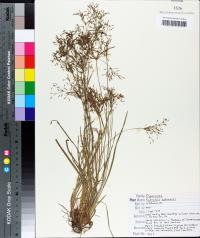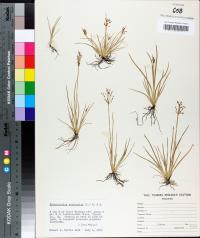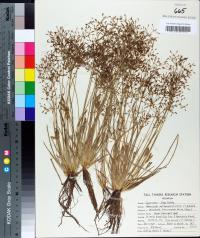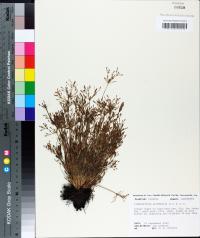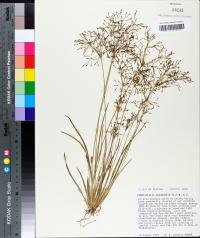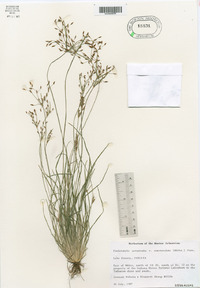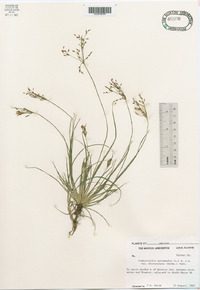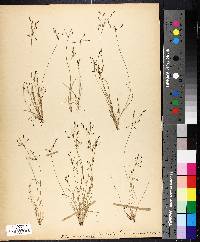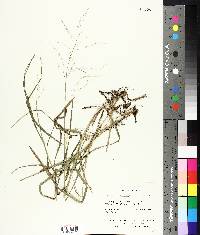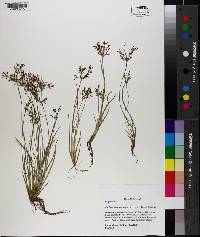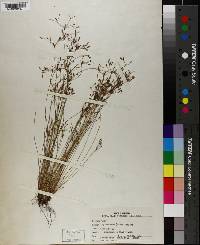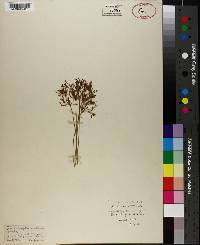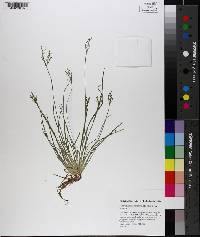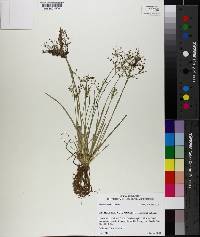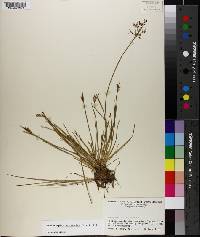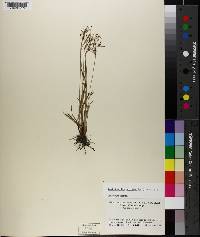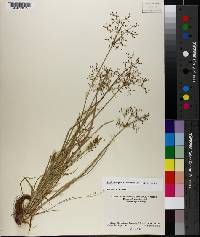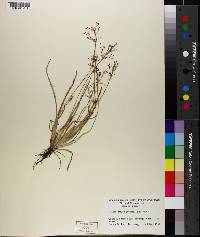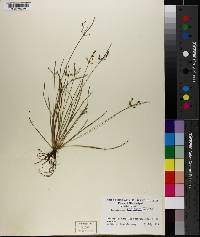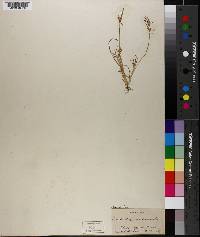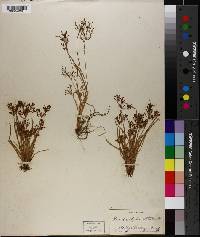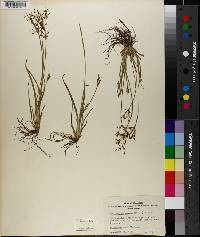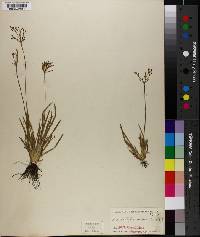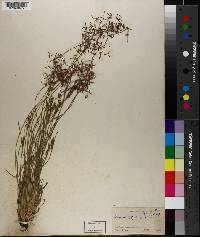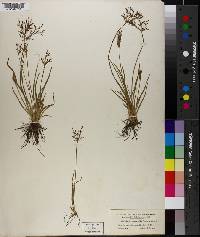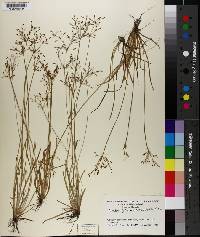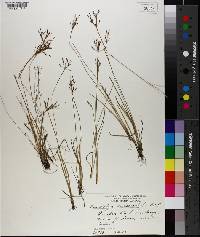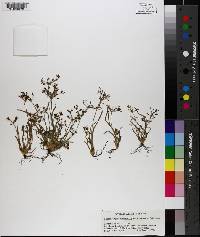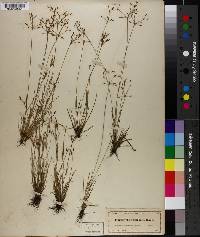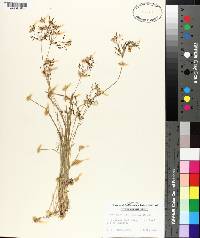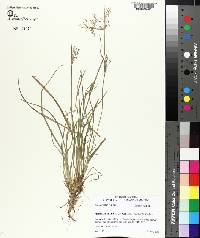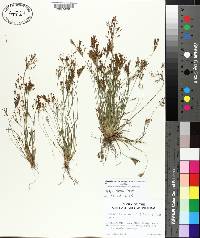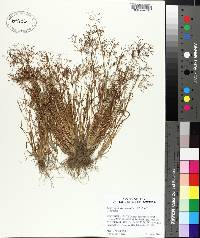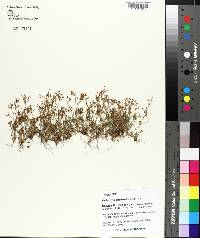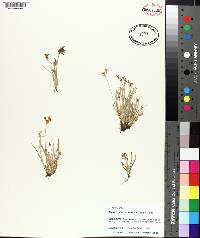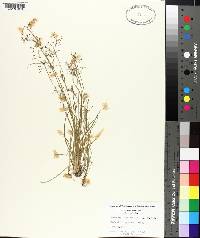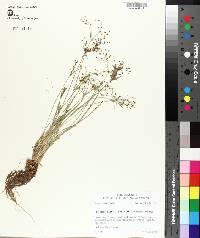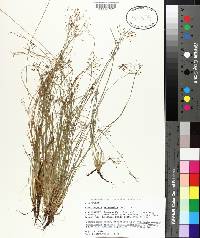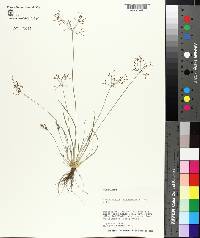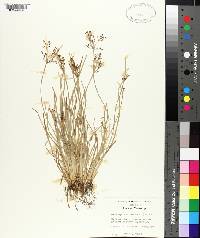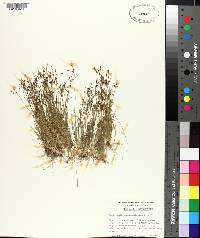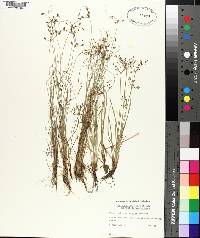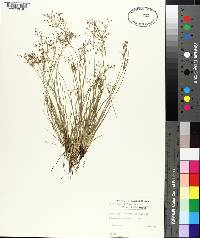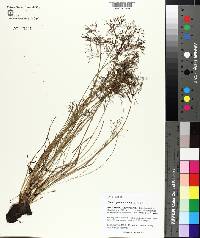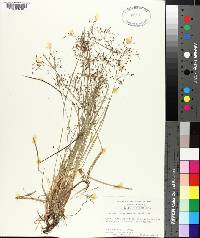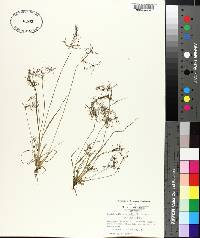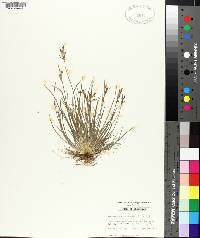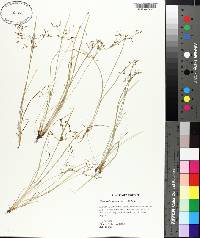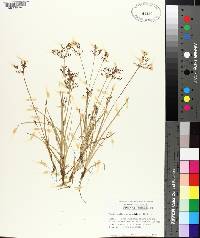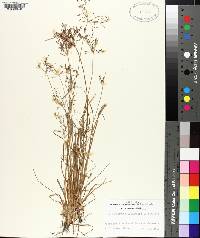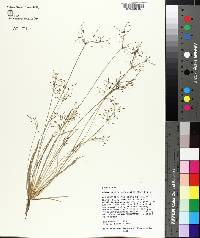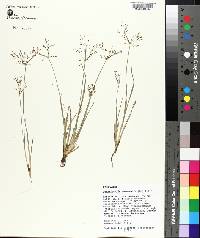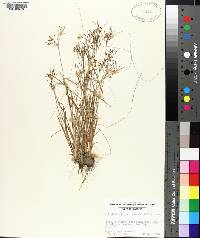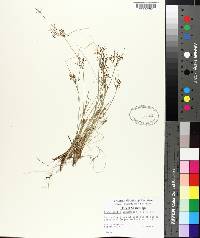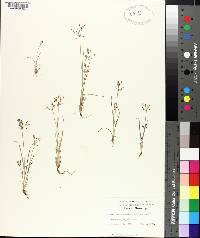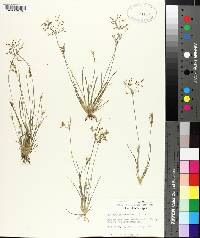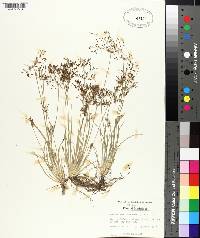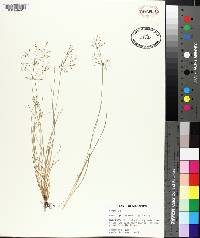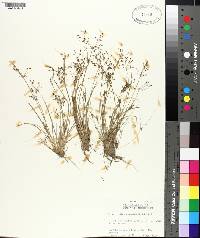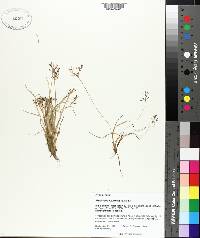
|
|
|
|
Family: Cyperaceae
Slender Fimbry
[Fimbristylis autumnalis var. mucronulata Fernald, moreFimbristylis frankii Steud., Fimbristylis frankii var. brachyactis Fernald, Fimbristylis geminata Kunth, Iria autumnalis var. caespitosa , Scirpus autumnalis L., Trichelostylis mucronulata (Michx.) Torr.] |
Plants annual, cespitose, 5-20(-30) cm, glabrous, plant base soft; rhizomes absent. Leaves distichous, shorter or longer than culms; sheaths keeled, entire or distally ciliate; ligule of short hairs complete; blades narrowly linear, 1-3 mm wide, flat, margin scabrid-ciliate. Inflorescence: anthelae compound, mostly diffuse, mostly turbinate, as broad as long, ascending-branching; scapes filiform to linear, distally variously compressed, sometimes alate, 0.5-1.5(-2) mm wide, edges scabrid; primary involucral bract usually 1, blade exceeding or exceeded by anthela. Spikelets red-brown or brown, mostly narrowly lanceoloid to narrowly ellipsoid, 3-7 mm; fertile scales lanceolate, keeled, 1.5-2 mm, narrowly acute, glabrous, midrib excurrent as mucro. Flowers: stamens (1-)2; styles 3-fid, slender, with 3 angled base, glabrous. Achenes pale brown, trigonous-obovoid, 0.5-0.7 mm, apiculate and 3-ribbed, smooth to variably warty. 2n = 10. Fruiting summer-fall, all year southward. Moist to wet sands, peats, silts, or clays, primarily of disturbed, sunny ground such as seeps, ditches, savanna, stream banks, reservoir drawdowns, and pond shores; 0-500(-1000) m; N.B., Ont., Que.; Ala., Ark., Conn., Del., D.C., Fla., Ga., Ill., Ind., Iowa, Kans, Ky., La., Maine, Md., Mass., Mich., Minn., Miss., Mo., Nebr., N.H., N.J., N.Y., N.C., Ohio, Okla., Pa., R.I., S.C., S.Dak., Tenn., Tex., Vt., Va., W.Va., Wis. Annual herb, tufted 5 - 20 cm tall Leaves: basal, more or less two-ranked, longer or shorter than culms, 1 - 4 mm wide, flat, narrowly linear, parallel-veined, with a sheathing base that encloses the stem. Sheaths shorter than the blade, broadly margined, keeled, and opening at the top. Inflorescence: a terminal, compound, dense or widely spreading anthela of spikelets subtended by a more or less upright bract (an anthela is a type of inflorescence which bears lateral branches that are longer than the main axis). Bract shorter than or surpassing the inflorescence. Flowers: minute, subtended by a floral scale, lacking sepals and petals. Stamens usually two, exserted. Pistil one. Style enlarged and three-angled basally, three-cleft. Fruit: a one-seeded achene, light brown, to 1 mm long, swollen, reverse egg-shaped and three-angled, obscurely three-ribbed, smooth to warty. Seed with a thin, non-adherent wall. Culm: 5 - 20 cm long, slender, flattened, solid, growing above the leaves. Spikelets: brown or reddish brown, 3 - 7 mm long, slender, narrowly lance-shaped to narrowly ellipsoid. Floral scales spirally arranged and overlapping, 1.5 - 2 mm long, narrowly egg-shaped with a thinly pointed apex, keeled, with a midrib that extends past the apex into a tiny point. Lower spikelet scales non-flowering, larger than the fertile flower scales, and often bladed. Similar species: The similar Fimbristylis puberula differs by having two-cleft styles and biconvex achenes. Flowering: July to late September Habitat and ecology: Local in moist ground along shores and in ditches. Occurence in the Chicago region: native Etymology: Fimbristylis comes from fimbria, meaning "a fringe," and stylus, meaning style, referring to the hairy-fringed style in the genuine species. Autumnalis means "of the Autumn" or "flowering in the Autumn." Author: The Morton Arboretum Tufted annual to 2 dm; stems flattened, often harsh-edged; lvs subdistichous, to 4 mm wide; ligule a line of short hairs; longest invol bract suberect, sometimes surpassing the infl; spikelets 3-7 mm, slender, in a dense or open system of often subumbelliform cymes; scales lance-ovate, usually keeled, excurrently mucronate; stamens (1)2; anthers minute; style trifid, much longer than the achene, smooth; achene 1 mm, obovoid-trigonous, smooth to verrucose; 2n=10. Moist or wet, often disturbed sites; pantropical, n. to Me. and Minn Gleason, Henry A. & Cronquist, Arthur J. 1991. Manual of vascular plants of northeastern United States and adjacent Canada. lxxv + 910 pp. ©The New York Botanical Garden. All rights reserved. Used by permission. From Flora of Indiana (1940) by Charles C. Deam Moist, sandy, and muddy shores of lakes, sloughs, and streams and in ditches. This is a highly variable species both as to habit and morphological characters. When growing in the mud or in moist sand, the plant may be short and the umbels simple. When growing in its preferred habitat or among vegetation it may be 8-12 inches high. The margins of the leaves may be entire or rather closely serrate. The achenes may be plainly reticulated crosswise or very faintly so, varying somewhat in length, and free of tubercles or covered with them more or less all over the surface. I have not seen a specimen of the typical form of this species and the data given in the key have been obtained from published studies. Doubtless all Indiana plants belong to this variety. ...... Indiana Coefficient of Conservatism: C = 3 Wetland Indicator Status: OBL |
This project was made possible in part by the Institute of Museum and Library Services [MG-70-19-0057-19].
Powered by Symbiota

